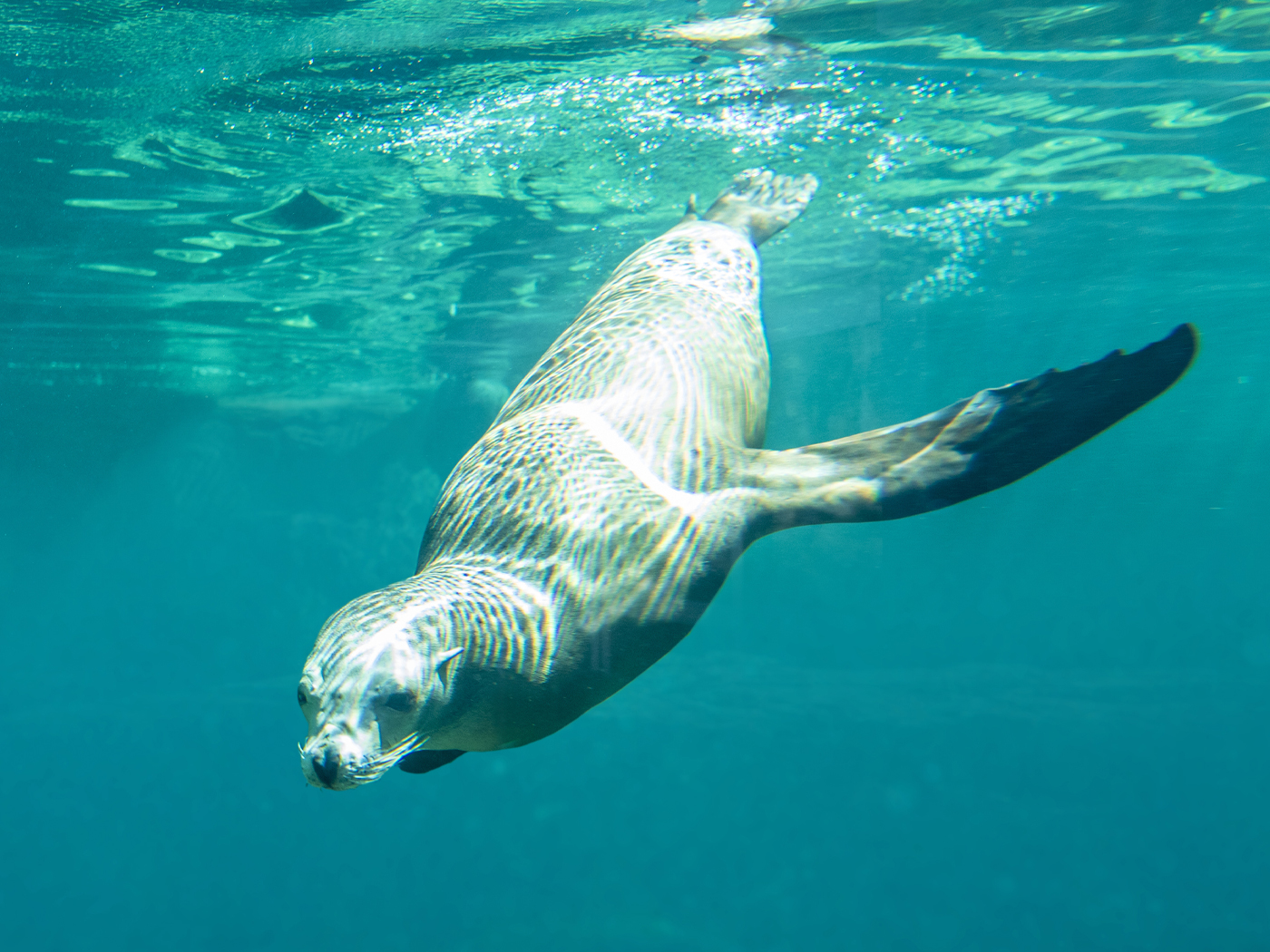Scuba divers can explore underwater depths firsthand because of specialized equipment that was developed in just the last century. Likewise, solar-powered airplanes currently in development promise to provide fuel-free flying. These inventions open new realms for human exploration, but the arachnid and insect equivalents of their equipment have been on the planet for ages.
Scuba is a stand-alone word today, but it began as the acronym for "self-contained underwater breathing apparatus," so named because it supplies breathable air underwater. An early version called the aqualung was engineered in part by the late Jacques Cousteau in 1943, based on an even earlier prototype. Modern scuba equipment is the result of several engineered refinements.
But it turns out that certain spiders had been master divers long before Cousteau. The diving bell spider is able to attach an air bubble to its abdomen and use it underwater for gas exchange. A LiveScience article described how these unique arachnids build underwater webs in ponds and then stock them with a pocket of air.1 A recent study found that the spiders could stay underwater "for more than a day," which surprised the researchers.2
In a similar context, Tel Aviv University scientists tried to discover why Oriental hornets were more active when sunlight was most intense. They found that these creatures actually convert ultraviolet light into usable electric power using microscopic grooves in their dark brown stripes, tiny pinholes in the yellow stripes, and the pigments melanin (brown) and xanthopterin (yellow). The authors of the study published in the journal Naturwissenschaften wrote, "The cuticle surfaces are structured to reduced reflectance and act as diffraction gratings to trap light and increase the amount absorbed in the cuticle."3
The team tried to duplicate the solar-collecting power of the hornet's body structures, "but had poor results in achieving the same high efficiency rates of energy collection. In the future, they plan to refine the model to see if this 'bio-mimicry' can give clues to novel renewable energy solutions."4
Exposure to intense sunlight aided these insects' energy collection, but did the extra radiation trapped in their bodies overheat them? No, the researchers discovered that these hornets are equipped with tiny air conditioners. Senior author David Bergman of Tel Aviv's School of Physics and Astronomy indicated that the insect has a "well-developed heat pump system" that keeps its body cool, which "is something that's not easy to do."4
If it's not easy for a person with foresight to do, then it is surely impossible for nature, which has no foresight. Yet it is standard evolutionary dogma that nature's blind forces equipped and trained these arthropods to scuba dive and harvest solar power.
These marvels of biological design far exceed human designers' attempts to mimic them. In typical nature-only rhetoric, Bergman told Renewable Energy World, "The hornet may have discovered things we do not yet know."4 But in the real world, only perspicacious and purposeful people can discover or invent. The amazing abilities of these and other living creatures can only have originated from the work of a master Engineer.
References
- Bryner, J. Scuba Spiders: Diving Arachnids Can Breathe Underwater. LiveScience. Posted on livescience.com June 9, 2011, accessed June 10, 2011.
- Knight, K. 2011. How the Water Spider Uses its Diving Bell. Journal of Experimental Biology. 214 (13): i. Reporting results published in Seymour, R. S. and S. K. Hetz. 2011. The diving bell and the spider: the physical gill of Argyroneta aquatica. Journal of Experimental Biology. 214 (13): 2175-2181.
- Plotkin, M. et al. 2010. Solar energy harvesting in the epicuticle of the oriental hornet (Vespa orientalis). Naturwissenschaften. 97 (12): 1067-1076.
- Is the Hornet Our Key to Renewable Energy? Renewable Energy World. Posted on renewableenergyworld.com January 7, 2011, accessed June 13, 2011.
Image credit: Norbert Schuller Baupi
* Mr. Thomas is Science Writer at the Institute for Creation Research.
Article posted on June 22, 2011.


















